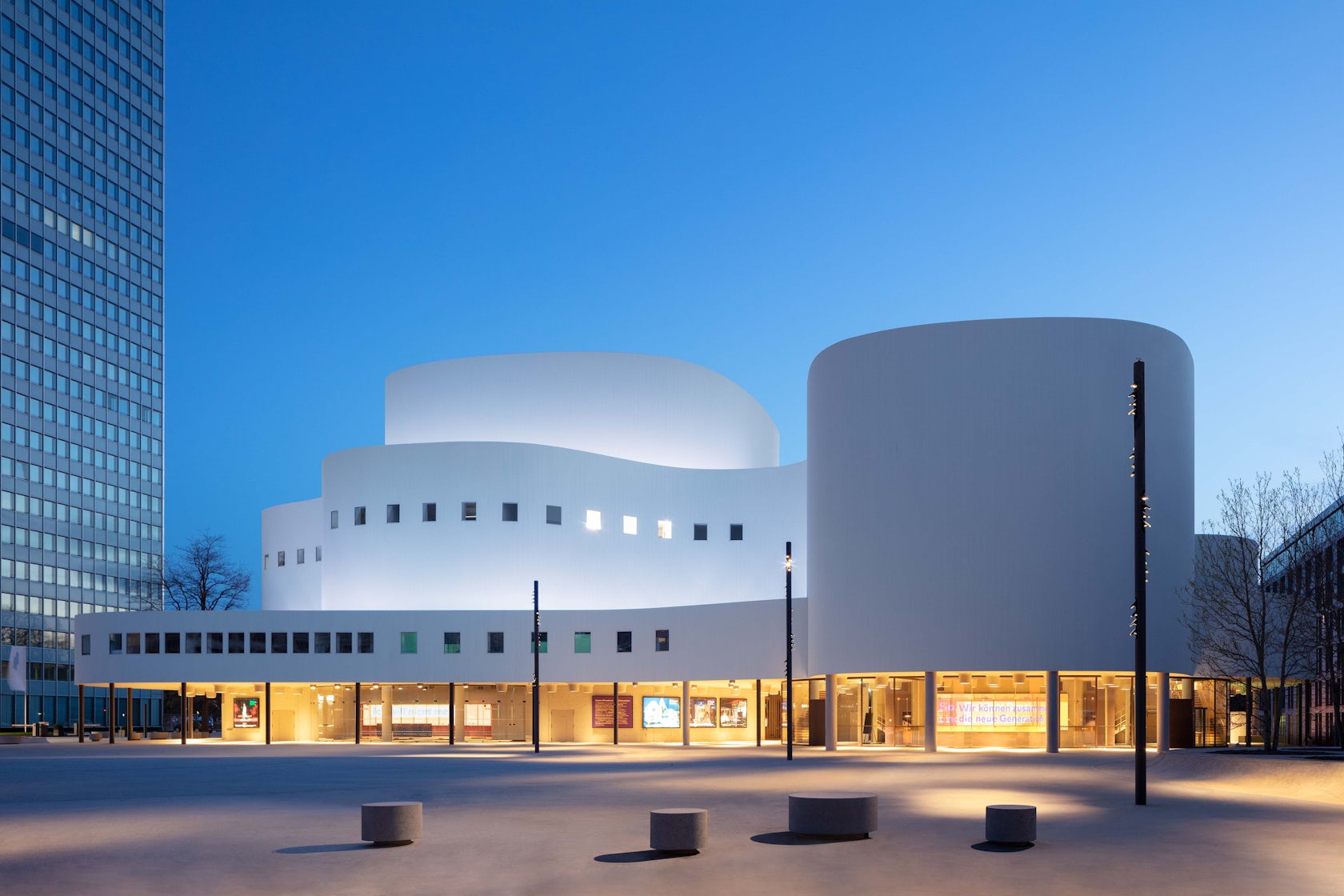Düsseldorfer Schauspielhaus // ingenhoven associates
[ad_1]
Text description provided by the architects.
New buoyant lightness – refurbishment of the Düsseldorf Schauspielhaus Built in 1970 according to the plans of Bernhard Pfau, the Schauspielhaus, together with the neighbouring Dreischeibenhaus, forms one of the most important ensembles of post-war architecture. The architectural icon has now been renovated by ingenhoven architects.The focus was on the sensitive handling of the architectural heritage.

© ingenhoven associates
The listed building fabric was adapted to the current state of the art. The façade and roof, the latter now covered with greenery, were renovated, as were the areas relevant to the public, including lighting and furnishings. Contemporary additions are elegantly restrained in matt black. Designer Petra Blaisse has created characterful curtains for the wall coverings.The biggest structural change lies in the new conception of the main entrance, the interweaving of the playhouse and the city.

© ingenhoven associates
While in Pfau’s original design the main entrance was located at the Hofgarten, he moved it to the square side under the influence of the then head of the building department, but without redesigning the internal infrastructure. Now the subsequently added ticket booth has been demolished and replaced by an airy glass pavilion on Gustaf-Gründgens-Platz.

© ingenhoven associates
A new glass vestibule reorganises the main entrance. The bronzed glass in the foyer was replaced by clear glass and allows the view to wander far through the building to the courtyard garden with its magnolias. Building historyThe Düsseldorf Schauspielhaus theater was founded in 1904 by Louise Dumont and Gustav Lindemann as a private theater with an associated acting school, and soon became one of the leading theaters of the German Empire and, later, of the Weimar Republic.

© ingenhoven associates
During the Second World War, the theater building—which had been designed by Bernhard Sehring in 1905—was completely destroyed; in 1951, the theater was re-established in what at the time was called the Operettenhaus (operetta house) as an independent institution of the City of Düsseldorf. Gustaf Gründgens was in charge as general manager; he was one of the best-known students of Dumont and Lindemann before the war.

© ingenhoven associates
Over many years, the Schauspielhaus theater rose to become one of the most important German-speaking stages in Europe and also retained this position for a long time under Gründgens’ successor, Karl-Heinz Stroux. This is evident from the numerous invitations to the annual Berlin theater meeting which, until the fall of the wall in 1990, was always considered to be the most important cultural event in the world of theater in the Federal Republic.

© ingenhoven associates
Well-known actors and directors who dominated the post-war era were under contract here, including Elisabeth Bergner, Paula Wessely, Maria Wimmer, Ernst Deutsch, Fritz Kortner, and Bernhard Minetti; Wolfgang Langhoff moved from Düsseldorf to Berlin in order to found the Langhoff theater dynasty. The regional, national, and European success of the establishment led, from 1965, to the design of the new building, for which Bernhard Pfau was commissioned after succeeding in several stages of the competition..

© ingenhoven associates
Düsseldorfer Schauspielhaus Gallery
[ad_2]
Source link


